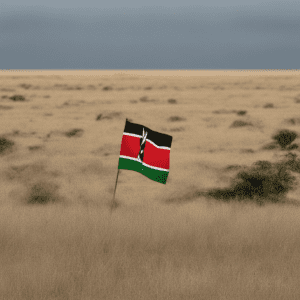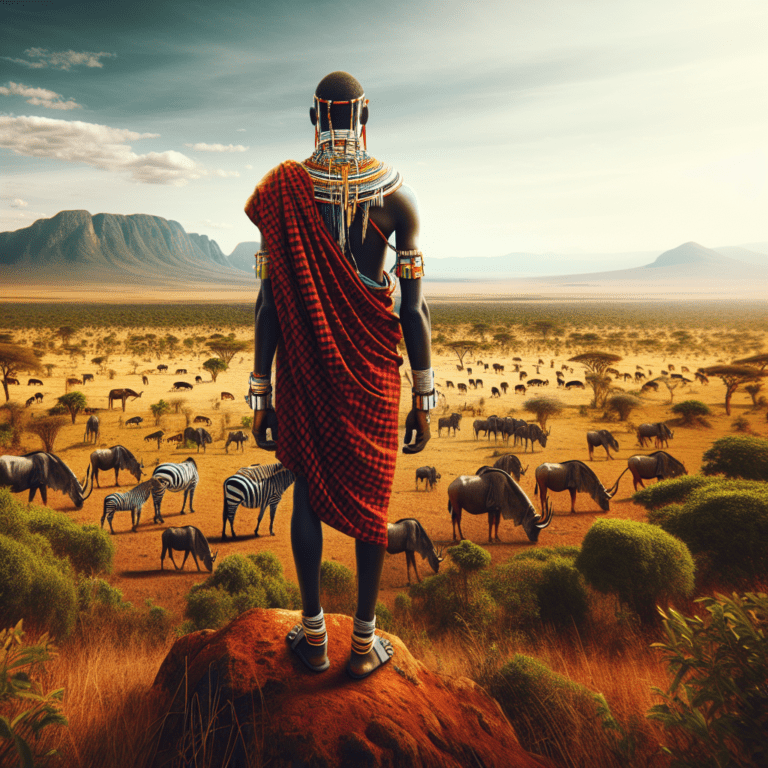How Did Kenya Gain Independence From British Colonial Rule?
In the mid-20th century, Kenya embarked on a remarkable journey towards freedom and self-determination, casting off the shackles of British colonial rule. The struggle for independence was an arduous one, marked by resistance, resilience, and the unwavering determination of the Kenyan people. This article takes you on a captivating journey through the key events and influential figures that led to Kenya’s hard-earned independence from British colonial rule. From the Mau Mau uprising to the Lancaster House Conference, discover the fascinating story of Kenya’s path to sovereignty.

This image is property of pixabay.com.
Background
Kenya under British colonial rule
Kenya, located in East Africa, was under British colonial rule for many years. This period of colonization lasted from the late 19th century until the mid-20th century. During this time, Kenya experienced significant changes in its social, economic, and political landscape. The British introduced their governance system, established administrative structures, and implemented policies that favored their own interests, often to the detriment of the local population.
Resistance and push for independence
However, the Kenyan people did not passively accept British rule. Over the years, various resistance movements began to emerge as the Kenyan people grew increasingly dissatisfied with their colonial status. These movements sought to challenge British authority and push for self-rule. One of the most notable and influential resistance movements was the Mau Mau uprising.
Post-World War II
Emergence of nationalist movements
The years following World War II brought significant changes to the African continent, with a growing wave of nationalism sweeping across many countries, including Kenya. The Kenyan people, inspired by the broader movement for self-determination, started to form nationalist movements to fight for independence. These movements aimed to unite the diverse ethnic groups within Kenya and create a strong, independent nation.
Mau Mau uprising
The Mau Mau uprising, which took place between 1952 and 1960, is considered a turning point in Kenya’s struggle for independence. The Mau Mau movement, comprised mainly of the Kikuyu ethnic group, fought against British rule and sought to reclaim their land and political rights. The British colonial authorities responded with a brutal crackdown, which led to widespread violence and human rights abuses. The Mau Mau uprising galvanized support for independence both within Kenya and internationally, ultimately paving the way for negotiations and constitutional reforms.

This image is property of pixabay.com.
Negotiations and Constitutional Reforms
Appointment of Royal Commission
Recognizing the need to address the growing calls for independence, the British government appointed the Royal Commission in 1953 to investigate the situation in Kenya. The commission, under the leadership of Sir Henry Willink, was tasked with examining the social, economic, and political issues facing the country and making recommendations for the way forward.
Lancaster House Conference
Following the recommendations of the Royal Commission, the Lancaster House Conference was held in London in 1960. This conference brought together representatives from the British government and various Kenyan nationalist groups. The conference aimed to negotiate a peaceful transfer of power and establish a roadmap for Kenya’s independence. After months of negotiations, a consensus was reached, leading to significant breakthroughs in the path towards self-rule.
Road to Independence
Agreement on majority African rule
One of the key milestones on the road to independence was the agreement reached between the British government and the Kenyan nationalist leaders on majority African rule. This agreement ensured that Africans would dominate the political landscape and have a say in the governance of their own country. It marked a crucial step towards ending British colonial rule and establishing an independent Kenyan government.
Formation of independent Kenyan government
On December 12, 1963, Kenya celebrated its independence as Jomo Kenyatta, the leader of the Kenya African National Union (KANU), became the country’s first Prime Minister. Kenya’s journey to independence was finally accomplished after years of struggle and sacrifice. The new government embarked on a path of nation-building, striving to bring about positive change in various sectors.
This image is property of pixabay.com.
Key Players
Jomo Kenyatta
Jomo Kenyatta, often referred to as the “Father of the Nation,” played a crucial role in Kenya’s struggle for independence. As the leader of KANU, Kenyatta tirelessly fought for the rights of the Kenyan people and worked towards achieving self-rule. After independence, he became Kenya’s first Prime Minister and later served as its President until his death in 1978. Kenyatta’s leadership and vision continue to shape Kenya’s political landscape and inspire future generations.
Mzee Jaramogi Oginga Odinga
Another prominent figure in Kenya’s struggle for independence was Mzee Jaramogi Oginga Odinga. Odinga, a staunch nationalist and a founding member of KANU, played a crucial role in mobilizing support for independence. He served as Kenya’s first Vice President and later became one of the leading opposition figures. Odinga’s contributions to Kenya’s independence movement and his dedication to democracy remain an important part of the country’s history.
Tom Mboya
Tom Mboya, a charismatic and influential leader, was also instrumental in Kenya’s fight for independence. He played a key role in the negotiations leading to Kenya’s independence and was a trusted advisor to Jomo Kenyatta. Mboya’s contributions extended beyond politics, as he spearheaded efforts to develop education and healthcare systems in post-independence Kenya. His tragic assassination in 1969 was a significant loss to the nation.
Economic Impacts
Independence effects on the Kenyan economy
Kenya’s independence had a profound impact on its economy. As the country gained control over its resources and decision-making processes, it embarked on a journey to develop a robust and sustainable economy. Kenya focused on diversifying its industries, investing in infrastructure, and promoting agricultural and industrial development. These efforts laid the foundation for future economic growth and set Kenya on a path towards becoming one of Africa’s leading economies.
Challenges in the post-independence period
However, the post-independence period was not without its challenges. Kenya faced numerous hurdles in economic development, including high levels of poverty, unemployment, and income inequality. The government had to tackle these issues while simultaneously building new institutions and governing a diverse population. It was a complex task, but the people of Kenya remained committed to overcoming these obstacles and creating a prosperous nation for all.
Social Changes
Land redistribution and ownership
One of the significant social changes brought about by Kenya’s independence was the issue of land redistribution and ownership. The colonial period had seen the dispossession of land from indigenous communities, leading to social inequalities and conflicts. The independent Kenyan government prioritized land reform, aiming to address historical injustices and create a more equitable distribution of land. By implementing policies such as land resettlement schemes and promoting land ownership for small-scale farmers, the government sought to empower Kenyan citizens and bring about social justice.
Education and healthcare reforms
Kenya’s independence also brought about significant reforms in the education and healthcare sectors. The government recognized the importance of investing in human capital as a key driver of national development. Efforts were made to expand access to education, improve the quality of schools, and promote vocational training. Similarly, the healthcare system underwent reforms with the establishment of new healthcare facilities, the training of medical professionals, and the implementation of public health programs. These reforms aimed to improve the well-being of all Kenyan citizens and foster a skilled and healthy workforce.
Legacy of Independence
Kenya’s political landscape
Kenya’s independence has had a lasting impact on its political landscape. The establishment of a multi-party democracy provided a platform for political participation, allowing citizens to exercise their rights and shape the direction of the country. However, Kenya has also faced challenges related to political corruption, ethnic tensions, and occasional instances of violence during elections, which have affected the country’s progress. Nevertheless, the spirit of independence and the desire for a democratic and inclusive nation continue to guide Kenya’s political discourse and aspirations.
National celebrations and remembrance
Every year, Kenya commemorates its independence on December 12th with national celebrations and remembrance. This day serves as a reminder of the sacrifices made by the Kenyan people in their fight for self-rule. It is an occasion to reflect on the progress made since independence and to renew the commitment to building a stronger and more prosperous nation. The celebrations bring together people from all walks of life, showcasing Kenya’s diverse cultures and united spirit.
Regional Influences
African solidarity and pan-Africanism
Kenya’s struggle for independence was not isolated but part of a broader African movement for self-determination. The fight against colonialism created a sense of solidarity among African nations, with support and inspiration flowing between countries. Kenya actively participated in pan-African forums, collaborating with other nations to address common challenges and foster regional unity. The legacy of pan-Africanism and the spirit of African solidarity continue to influence Kenya’s foreign policy and its relationships with neighboring countries.
Impact on neighboring countries
Kenya’s independence had a significant impact on its neighboring countries in East Africa. The success of Kenya’s struggle for self-rule inspired and emboldened other nations in the region, who also sought to break free from colonial rule. The independent Kenyan government provided support to these countries, offering logistical assistance, training resources, and diplomatic encouragement. Kenya’s freedom became a beacon of hope for the entire region, fueling the momentum towards independence throughout East Africa.
Conclusion
Kenya’s journey to independence from British colonial rule was a long and challenging one, marked by resistance, negotiations, and constitutional reforms. The efforts of key players such as Jomo Kenyatta, Jaramogi Oginga Odinga, and Tom Mboya were instrumental in achieving self-rule and shaping the nation’s future. Independence brought about significant social and economic changes, with the government focusing on land redistribution, education, healthcare, and economic development.
While Kenya has made remarkable progress since gaining its independence, challenges remain. The country continues to address issues related to poverty, unemployment, income inequality, and political governance. However, the spirit of independence and the determination of the Kenyan people provide a strong foundation for ongoing reforms and aspirations for a better future. Kenya’s journey to independence serves as an inspiration not only to its citizens but also to other nations striving for self-determination and national development.







